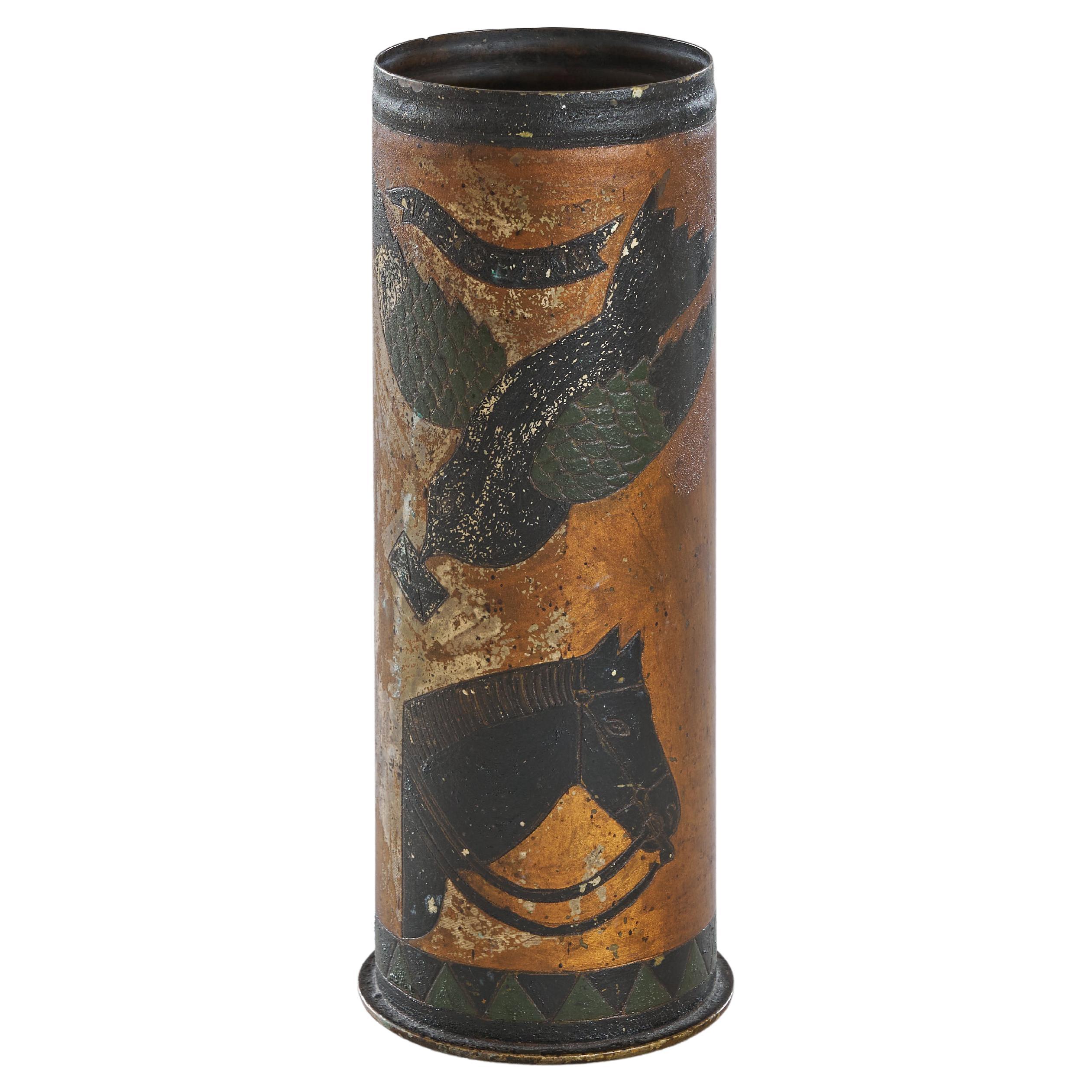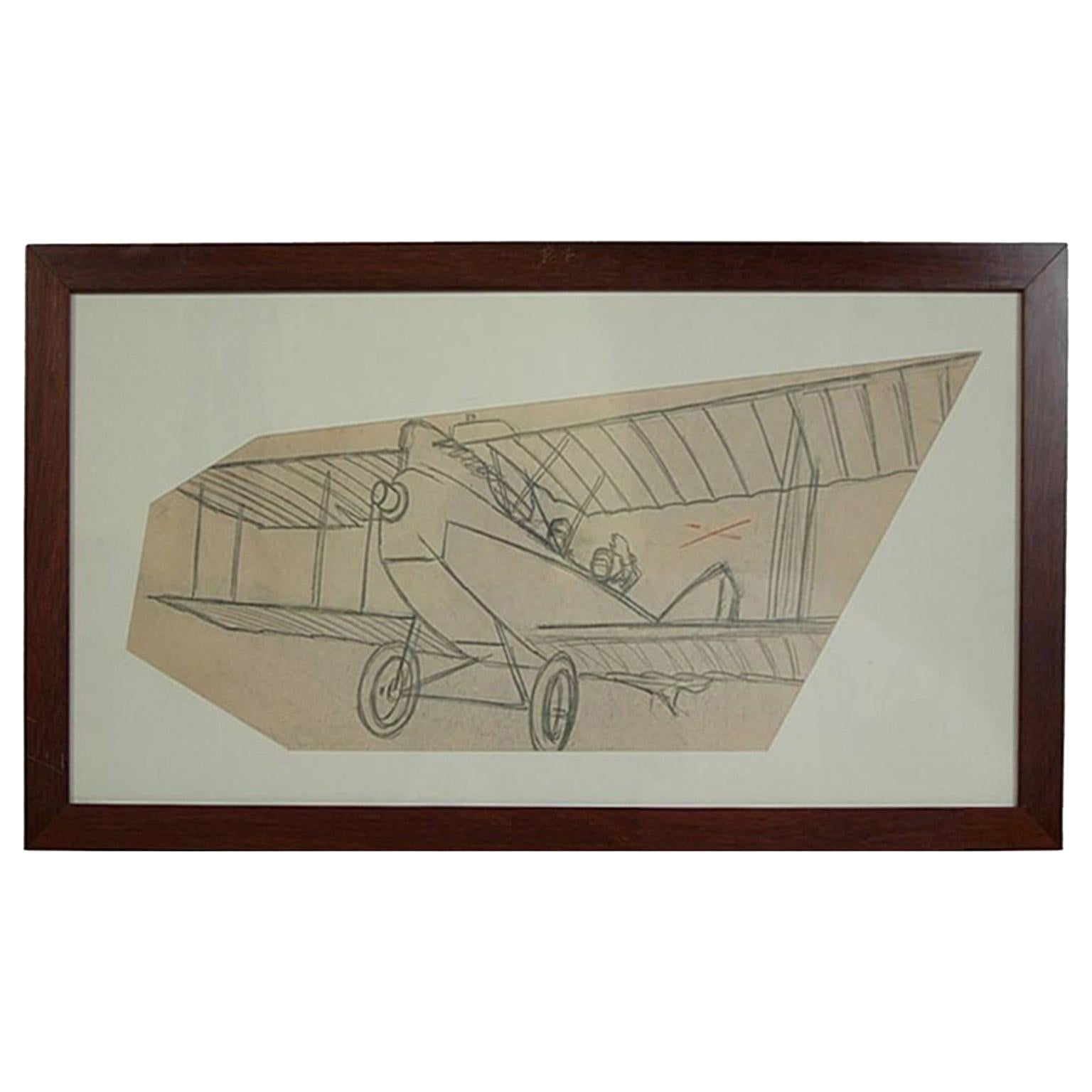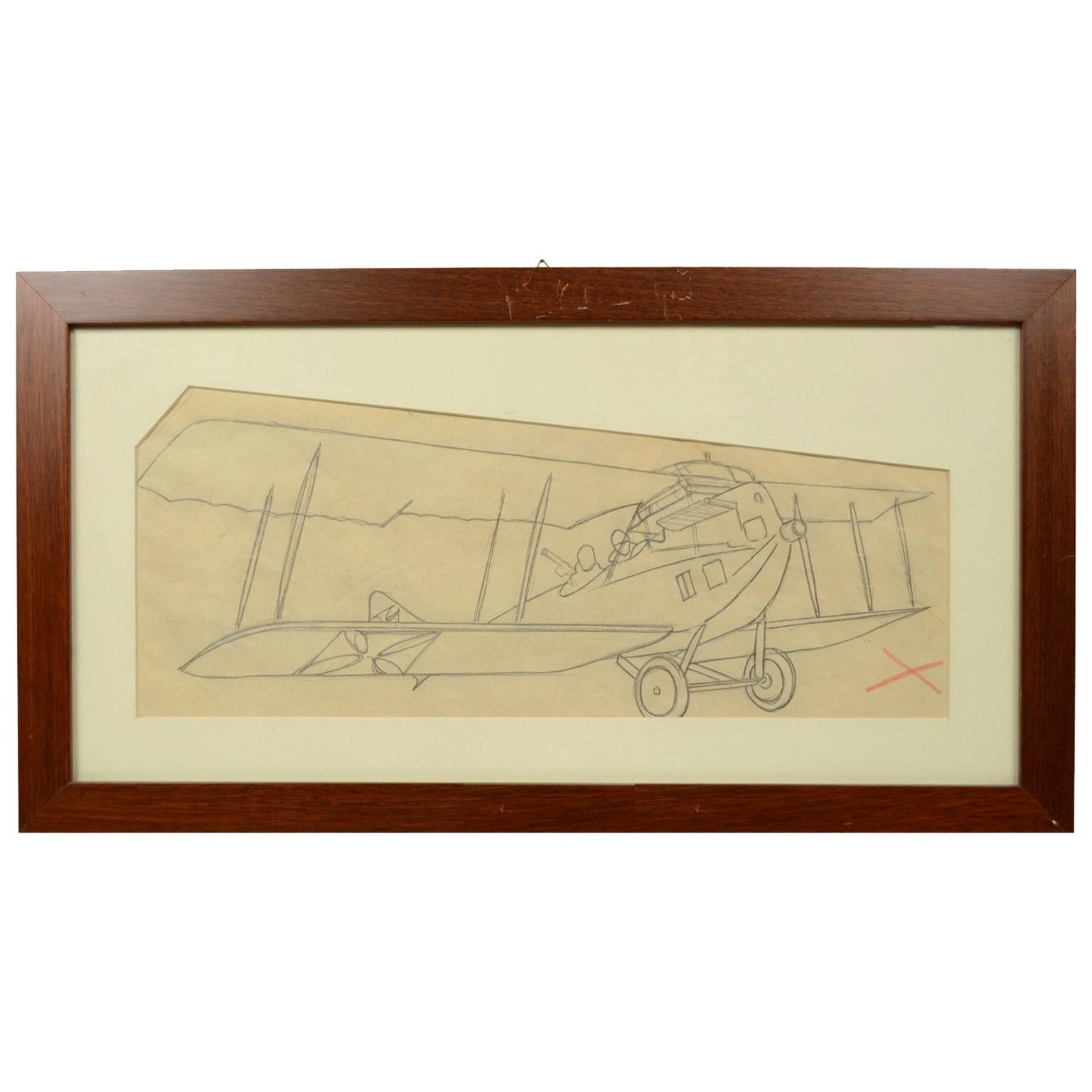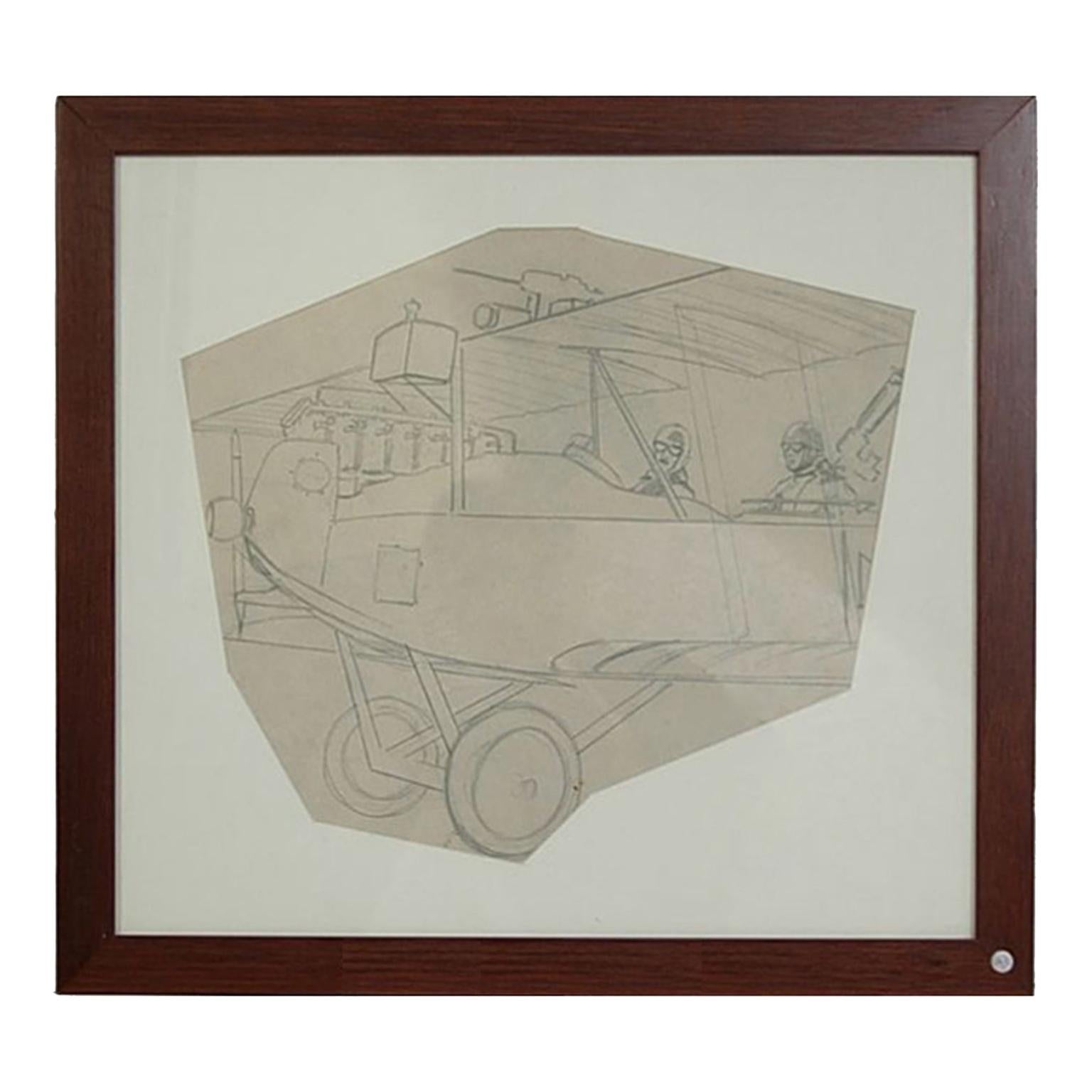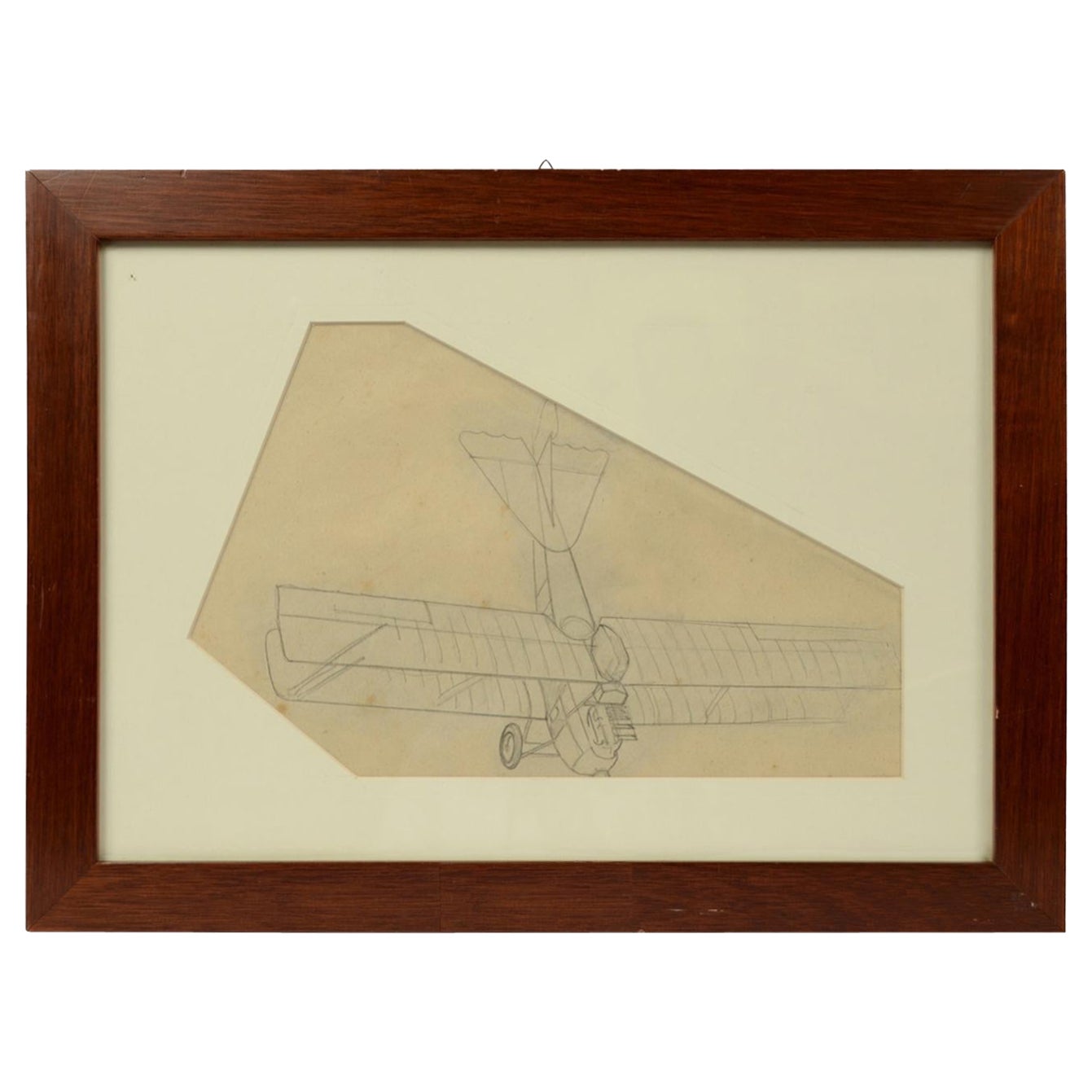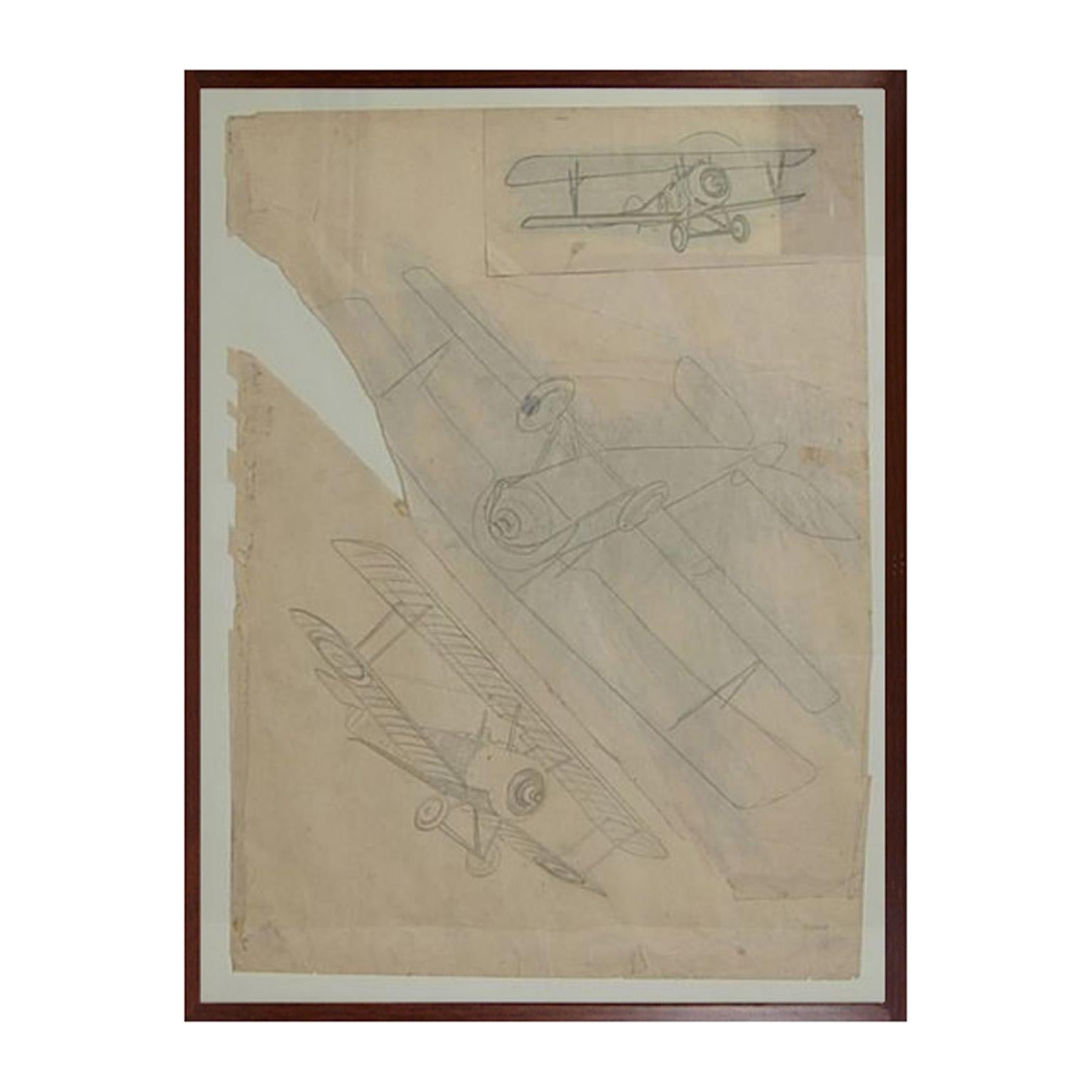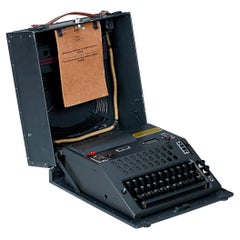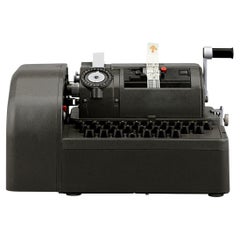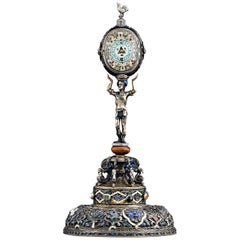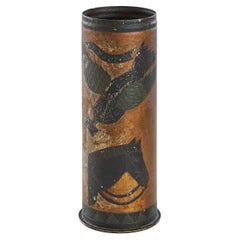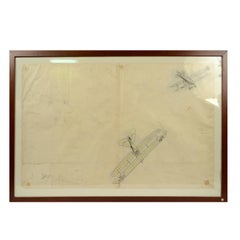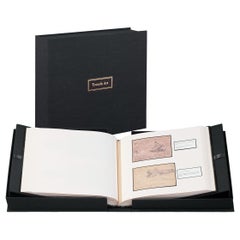
WWI Soldier Trench Art Drawings
View Similar Items
Want more images or videos?
Request additional images or videos from the seller
1 of 10
WWI Soldier Trench Art Drawings
About the Item
- Dimensions:Height: 3 in (7.62 cm)Width: 14 in (35.56 cm)Depth: 12.25 in (31.12 cm)
- Style:Other (In the Style Of)
- Materials and Techniques:
- Place of Origin:
- Period:
- Date of Manufacture:Early 20th Century
- Condition:
- Seller Location:New Orleans, LA
- Reference Number:Seller: 31-10101stDibs: LU891121009662
About the Seller
5.0
Recognized Seller
These prestigious sellers are industry leaders and represent the highest echelon for item quality and design.
Established in 1912
1stDibs seller since 2010
93 sales on 1stDibs
Typical response time: 7 hours
More From This SellerView All
- Swiss Nema Cipher MachineLocated in New Orleans, LAThis Swiss-engineered cipher machine is a fascinating piece of 20th-century military and engineering history, and this particular example is one of the ...Category
20th Century Swiss Other Historical Memorabilia
MaterialsMetal
$34,500 - Cx-52 Model Swiss Cipher MachineLocated in New Orleans, LAA triumph of ingenuity and craftsmanship, this Swiss cipher machine is a fabulous example of mechanical precision. Cipher machines are used to encrypt a...Category
20th Century Swiss Other Historical Memorabilia
MaterialsMetal
- Viennese Enamel Soldier ClockBy Tobias KatzenbergerLocated in New Orleans, LAA work of exceptional detail, this magnificent Viennese clock takes the art form of enameling to new heights. The elaborately fashioned timepiece rests atop the head of a soldier, who stands on a pedestal populated by sphinxes. Exceptional details encase the entire piece, from the rooster finial to the gem-studded base. A hand-painted portrait of the heroic soldier on the reverse completes this stunning piece. Particularly popular during the 19th century, Viennese enamels...Category
Antique Early 19th Century Austrian Other Mantel Clocks
MaterialsMulti-gemstone, Enamel
- 19th Century Exhibition Model of Expanding Table by Samuel HawkinsBy Samuel HawkinsLocated in New Orleans, LAA masterpiece of both cabinetmaking and mechanical engineering, this one-of-a-kind expanding table was crafted by the renowned cabinetmaker Samuel Hawkins of London for the Great Exhibition of 1851. Diminutive in size, the fascinating table was designed as a model to demonstrate Hawkins’ innovative patent screw movement to visitors of the Exhibition – six million people in total over five months. It was exhibited again a century later at the Victoria & Albert Museum during the Festival of Britain, an event intended “to symbolise two main qualities of the national character: realism and strength on the one hand, and, on the other, independence and imagination” (Catalogue of the Exhibition, 1951, p.117). To this day, the miniature masterpiece demonstrates the quest of English furniture makers to combine technical innovation with superb craftsmanship. Displaying exceptional ingenuity, Hawkins’ wind-out screw mechanism allowed one to extend the table’s base to accommodate concentric leaves with the simple crank of a handle. It is based on the inventive expanding table originally designed by Robert Jupe in 1835, which used a swivel mechanism to separate sections of the tabletop and allow for segmented leaves to be inserted. Hawkins’ tabletop, on the other hand, extends outwards directly from the center in order to accommodate additional leaves around its diameter. This unique design allowed the mechanism to also smoothly operate on rectangular tables, which could be wound out from the middle to allow for more table space. Hawkins was not alone in his endeavor to combine the technical merits of engineering and mechanics with the most artful pursuit of cabinetmaking. The first half of the 19th century saw a prolific increase in the popularity of applying new ideas to traditional furniture principles, which allowed furniture to serve many purposes. The resulting “patent” furniture was practical and refined, though few were as innovative as Hawkins’ prodigious design. Carved with the year of the Exhibition on the beautifully designed pedestal base, the table is a testament to the significance of this innovation. The model is mentioned in detail in the catalog of the Great Exhibition of 1851, the first international exhibition of industry, manufacturing, and science. Held at London’s dazzling Crystal Palace, its visitors were treated to exhibits from around the globe, including feats of engineering, innovations in industry, and marvels of design. Queen Victoria herself was a frequent visitor, along with her husband, Prince Albert, and others including Charlotte...Category
Antique 19th Century English Other Tables
MaterialsMahogany
- Domestic Medicine Chest by Thompson & CapperBy Thompson & CapperLocated in New Orleans, LAAn invaluable addition to the 19th century home, this domestic medicine chest contained nearly everything needed to nurse a member of the house...Category
Antique 19th Century English Other Apothecary Cabinets
MaterialsBrass
- George VI Coin Coronation GobletBy T. Goode & Co.Located in New Orleans, LAA special silver coin commemorating the coronation of King George VI and Queen Elizabeth is inset into the base of this limited edition glass goblet. Crafted...Category
20th Century English Other Glass
MaterialsGlass
You May Also Like
- Highly Decorative WWI Bombshell Trench Art VaseLocated in Tilburg, NLRare and unusual piece of trench art from World War I (1914-1918), Belgium. Trench art was made during or after WW1. Soldiers used metal and used bombshells from the battlefields ...Category
Early 20th Century Belgian Folk Art Historical Memorabilia
MaterialsBrass
- Antique 1917 General Joffre WWI French Trench Art Cigarette LighterLocated in Stamford, CTVery unique Trench art, WW1 era brass petrol lighter, on one side is the portrait of Marshal Joseph Joffre. Marshal Joffre was the Commander in Chief of the French forces on the Wes...Category
Early 20th Century French Tobacco Accessories
MaterialsBrass
- 1920s Vintage Quinquina Drawing Depicting WWI Fighting Biplanes AircraftBy Riccardo CavigioliLocated in Milan, ITQuinquina drawing by Riccardo Cavigioli in the early 1920s representing biplane airplanes fighting. Left=single-seat biplane fighter Hanriot HD 1 produced under license by Macchi in ...Category
Vintage 1920s Italian Aviation Objects
MaterialsPaper
- Pencil Drawing Depicting a Brandenburg C I WWI Aircraft by Riccardo CavigioliBy Riccardo CavigioliLocated in Milan, ITPencil drawing by Riccardo Cavigioli in the early 1920s depicting a two-seat biplane airplane for reconnaissance Brandenburg C I of 1916, built by Ufag in Budapest. Measure with fram...Category
Vintage 1920s Italian Aviation Objects
MaterialsPaper
- Pencil Drawing Depicting a Brandenburg C I Aircraft WWI by Riccardo CavigioliBy Riccardo CavigioliLocated in Milan, ITPencil drawing by Riccardo Cavigioli in the early 1920s representing a two-seat biplane airplane for reconnaissance Brandenburg C I of 1916. Measure with frame cm 58 x 31, inch 23 x ...Category
Vintage 1920s Italian Aviation Objects
MaterialsPaper
- Vintage Indian Aviation Ink Drawing Depicting a Rumpler C I WWI AircraftBy Riccardo CavigioliLocated in Milan, ITThis Indian ink drawing by Riccardo Cavigioli represents a two-seat biplane airplane for reconnaissance Rumpler C I, produced in Germany in 1916 and powered by a Mercedes D III 160 h...Category
Vintage 1920s Italian Aviation Objects
MaterialsPaper
Recently Viewed
View AllMore Ways To Browse
Antique Other Antiques Art Collectables
Antique Cards
Antique War Memorabilia
Trench Art
Long Trench
Campaign Memorabilia
Antique Moments
Wwi Memorabilia
World War 1 Soldier
Historic Memorabilia
Men Trench
Napoleonic Drawings
Long Leather Trench
Wwi German
World War 1 Memorabilia
Napoleonic Soldier
Ornaments Christmas
Christmas Ornaments
